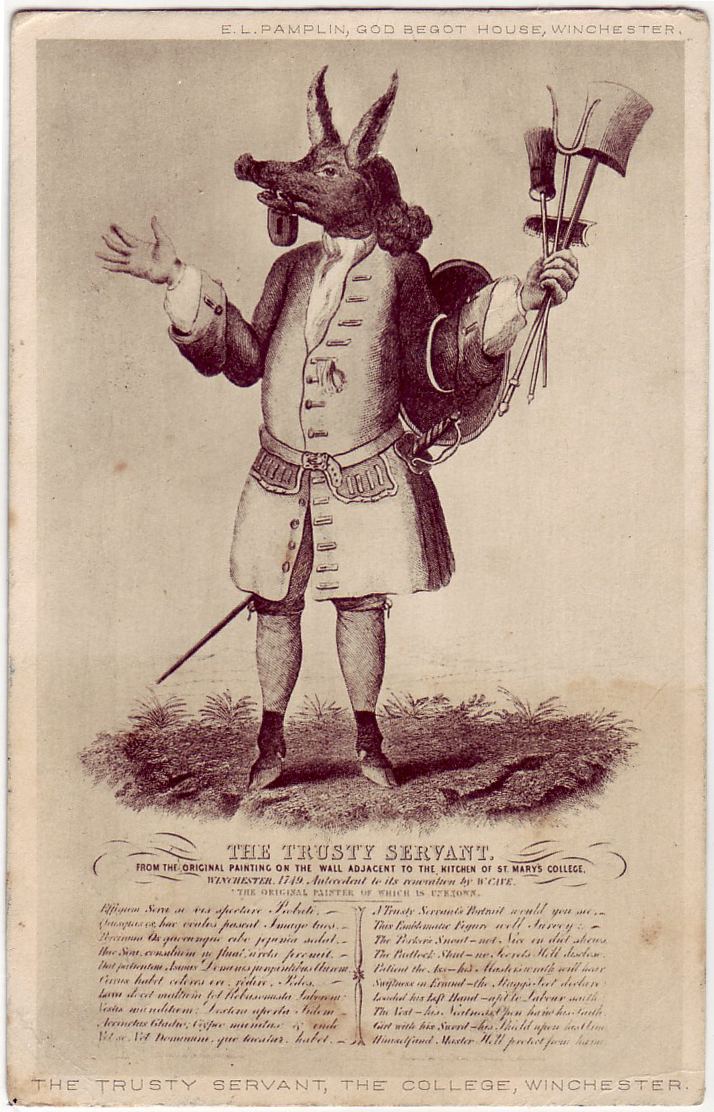 | ||
The hircocervus (Latin: hircus, "billy goat" + cervus, "stag") or tragelaph (Greek: τράγος, tragos, "billy goat" + έλαφος, elaphos, "stag"), also known as a goat-stag or horse-stag, was a legendary creature imagined to be half-goat, half-stag.
Contents
The creature is now best-known through The Trusty Servant painting in Winchester College, representing the ideal virtues of its alumni.
Origins
In his work De Interpretatione, Aristotle utilized the idea of a fabulous goat-stag to express the philosophical concept of something that is knowable even though it does not really exist. In Plato's Republic, Socrates speaks of his own image-making as similar to that of painters who paint goat-stags, combining the features of different things together (488a).
The word hircocervus first appears in the English language in a medieval manuscript dating from 1398 (now at the Bodleian Library).
The Trusty Servant
A hircocervus is depicted in a wall-painting called The Trusty Servant, painted by John Hoskins in 1579. It hangs outside the kitchen of Winchester College in Hampshire, England. The author Arthur Cleveland Coxe described "the time-honoured Hircocervus, or picture of 'the Trusty-servant,' which hangs near the kitchen, and which emblematically sets forth those virtues in domestics, of which we Americans know nothing. It is a figure, part man, part porker, part deer, and part donkey; with a padlock on his mouth, and various other symbols in his hands and about his person, the whole signifying a most valuable character."
The painting of The Trusty Servant had a didactic function: it is accompanied by allegorical verses that associate the hircocervus servant's various animal parts with distinctive virtues that the students of Winchester College were meant to follow.
The Latin verses have been translated into English as:
In culture
Umberto Eco refers to a hircocervus in his novel The Island of the Day Before.
Martin Luther uses the term "Goat-stag" (tragelaphus in his Latin) in his Theses Against the Antinomians (1540, Sixth Set) to describe "a law that does not condemn". Luther is stating that one can imagine a law from God that only instructs or teaches without threatening and condemning human sin. However, Luther claims that such a law, often sought by theologians throughout Christian history, does not actually exist.
The Trusty Servant Medal
In 2014 Winchester College commissioned a medal by Old Wykehamist Anthony Smith to be awarded to staff in recognition of "Long And Loyal Service". The medal features a relief sculpture of the hircocervus, as it appears in The Trusty Servant painting.
